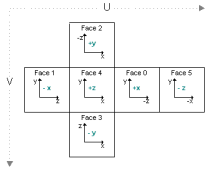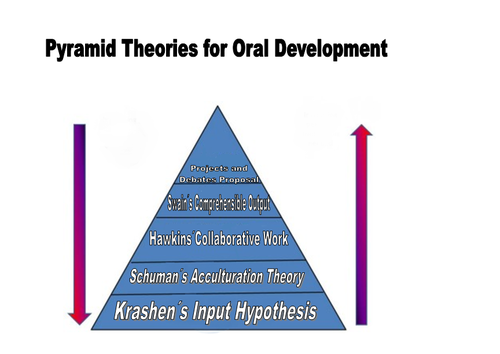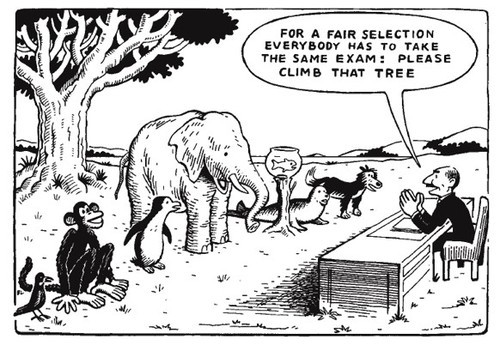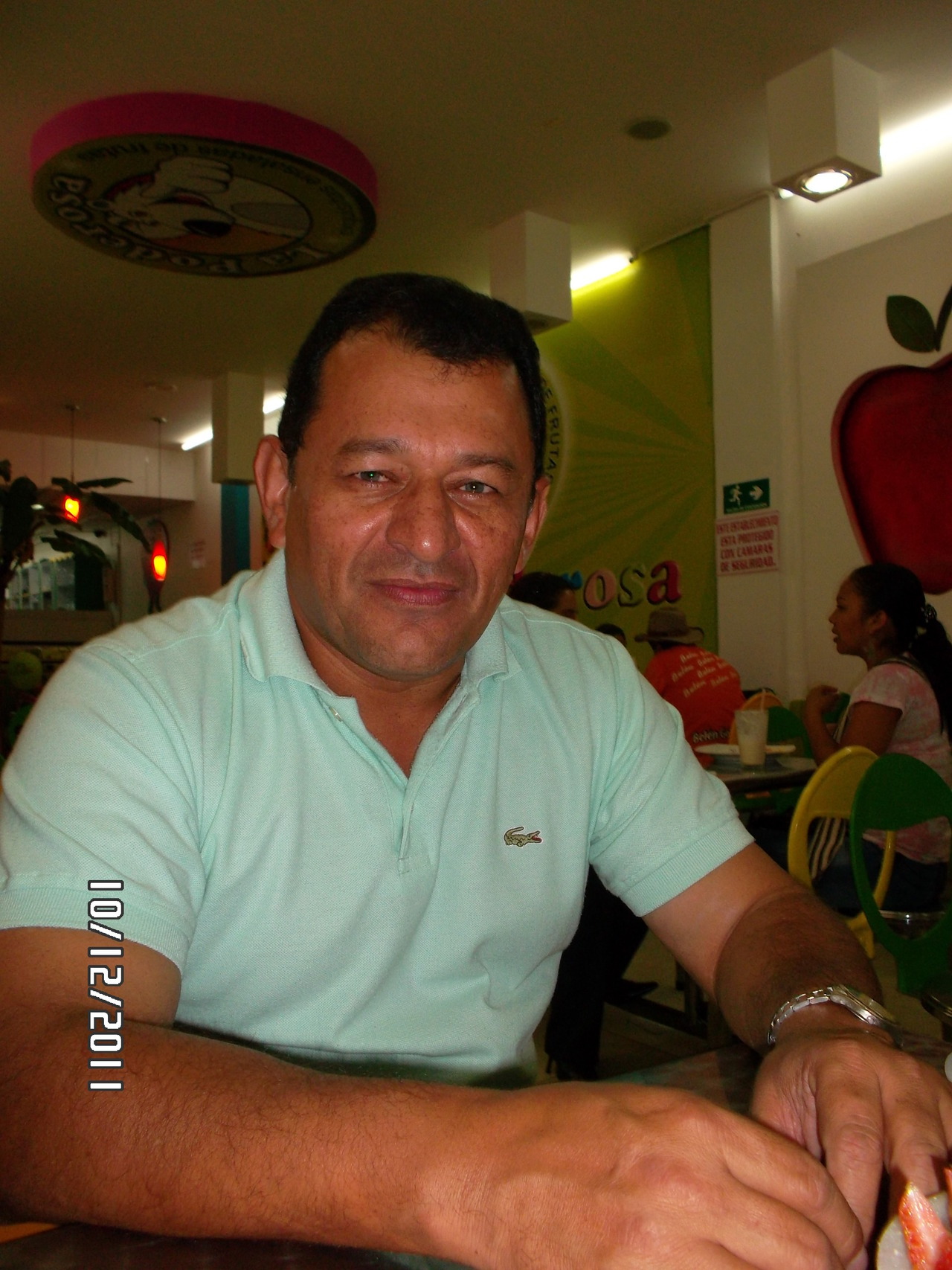http://fsltheoriesmaucaldasb2012.wordpress.com/
Theories of First and Second Language Acquisition
Universidad de Caldas, Manizales, Colombia. Master's program in Didactics of English. Professor: Carlos Mann Ospina Nova, November 2012 cminnova@yahoo.com
Wednesday, 5 December 2012
“Teacherese”
MY (E)MERGING THEORY: RUBIK-CUBE SHAPED TESOL “TEACHERESE”
My view of the language is that it is a bio-psycho-social-historical thinking and communication device product of evolution and rooted deeply into animal cognition and the communication of living beings. It is a human universal innate faculty that is realized in a particular communication code –a language-, which is developed and learned within a particular cultural group. A language is in turn real-ized in speech or tongue, which real-izes itself in geographic and social varieties (dialects and accents, acro-, meso-, and basi-lects). A language is a system of systems that cover formal (phonetic, phonologic, morphologic, syntactic, and semantic structures) and functional aspects (sociolinguistic, and pragmatic functioning of the language). Speech varieties are actualized, according to individual ways of expression or idiolect, in the form of register in particular communicative situations. It should be apparent that my view is not just juxtaposition of linguistic views that have developed historically, but an attempt of reconciling them in a unitary conceptual body.
Furthermore, my view of learning has followed the same aggregationist-synthetic procedure. Learning starts with perception, goes to sensation, to attention, to linking to prior schemata, to reflection, to consciousness, to abstraction. It begins as something purely biological in the individual, a matter of paced maturation and development, triggered and fueled by social interaction and individual activity. That is to say, learning has biological and social roots and –like language- despite being an individual reality it is also a social and cultural fact. Behaviorism, innatism, interactionism and a social-cultural perspective do not oppose so much in my view; rather, they complement each other, each underlining a particular aspect the other views do not probably highlight that much. Learning takes all what those theories have stated about it. It takes an individual with all his cognition, emotions, and personality; it also takes a context that situates the matter for learning and provides meaning and sense to it, and it takes a process of action and interaction, to construct it too. Language learning, as any other learning, follows those patterns.
Language learning is a mainly practical process. It is like learning how to walk, or how to drive a bicycle, a motorcycle or a car; it is like learning how to swim; you can be instructed but all you really need is practice; instruction, in practical learning, will never be enough. Simple imitation will never lead to real learning; only real practice will make real, understanding and enduring learning. However, in the case of F/SL, learning can also be theoretically grounded, i.e. in this case formal instruction is central, especially in the case of foreign languages. As language is
 made
for thinking and communication, a second or foreign language will only
be learnt from comprehension and use. Practical, in “practical
learning”, means individual and social action: comprehension and communication. “Practical” implies knowledge, skill, ability, competence, too.
made
for thinking and communication, a second or foreign language will only
be learnt from comprehension and use. Practical, in “practical
learning”, means individual and social action: comprehension and communication. “Practical” implies knowledge, skill, ability, competence, too.Finally, my view of teaching. Teachers can be born, but they have to be made; teaching has evolved –like the rest of human knowledge- from an intuitive and empiricist practice into a professional knowledgeable and reflective expertise. Teaching requires pedagogy (a sense of principles and goals, foundations and teleology of education), didactics (as know-how of teaching) and methodology/methods (as skill in classroom communication and conduction).
To conclude, my view of language teaching. It is grounded on the aforementioned
 views about language, language learning, and teaching. It is a
principled or professional practice that does not claim universal
validity, for languages, individuals, situations, and classrooms vary.
There is only one language, THE language, but many realizations of it,
languages; there is only one Human Being, but innumerable persons. I
don’t teach what cannot be taught because it is innate, the language; I teach a
language. Language teaching must be practical, i.e., communicative, as
languages are practical devices for thinking and communication. My
students at school are not linguistics students, they are language
learners; I do not teach the description of the language; I teach
through and for communication. Language teaching is meaning-centered,
for you cannot learn anything you don’t understand. It means rote
repetition and drilling are out of question. Comprehensive reading and
listening, lots of meaningful i+1 input, lots of ZDP interactive
practice, lots of productive effort, lots of self-, peer-, and
teacher-corrective feedback. The secret, if any, to language learning is
lots of sustained willing (conscious or not) effort, which is
attainable if adequate motivation is present. In the (language)
classroom, it means that motivating topics, activities, materials and
classroom arrangements draw students’ interest, which begets their
willing and engaged action that leads to learning, while reducing
disruptive behaviors due to boredom or lack of interest or
comprehension.
views about language, language learning, and teaching. It is a
principled or professional practice that does not claim universal
validity, for languages, individuals, situations, and classrooms vary.
There is only one language, THE language, but many realizations of it,
languages; there is only one Human Being, but innumerable persons. I
don’t teach what cannot be taught because it is innate, the language; I teach a
language. Language teaching must be practical, i.e., communicative, as
languages are practical devices for thinking and communication. My
students at school are not linguistics students, they are language
learners; I do not teach the description of the language; I teach
through and for communication. Language teaching is meaning-centered,
for you cannot learn anything you don’t understand. It means rote
repetition and drilling are out of question. Comprehensive reading and
listening, lots of meaningful i+1 input, lots of ZDP interactive
practice, lots of productive effort, lots of self-, peer-, and
teacher-corrective feedback. The secret, if any, to language learning is
lots of sustained willing (conscious or not) effort, which is
attainable if adequate motivation is present. In the (language)
classroom, it means that motivating topics, activities, materials and
classroom arrangements draw students’ interest, which begets their
willing and engaged action that leads to learning, while reducing
disruptive behaviors due to boredom or lack of interest or
comprehension. To
close, I wished to say that I have come up with a more or less
consolidated personal theory of S/FL teaching, for which I am indebted
to so many authors from so many schools of thought through history that
it would take really long to list here. Mine is just an amalgamated
remake of concepts I have been inherited. I have given this emerging
personal perspective the form of a Rubik cube. First a cube has six
sides. You can think of each side as one facet of learning (individual
and social cognitive, affective, personality, intelligence factors).
Each side can in turn be seen as made up of various constituents:
cognition embeds reflection, analysis, synthesis, perception… The
emotional side can include a variety of feelings and emotions from
negative to positive ones like anxiety, inhibition, risk-taking, It
means each of the six sides of the cube are composite, complex. From a
different perspective, the three axes can represent the basic
dimensions involved in language and learning: let’s make the vertical
axis the biological bases, while the horizontal left-to-right or across
axis represents society (including culture and history in it) and the
horizontal bottom-to-front or depth axis represents the individual, the
learner. Other aspects can be considered in the cube: corner points,
edges, diagonal lines, respectively representing the confluence of
adjacent aspects and cross-sectional aspects within and across the sides
and side components. The complexity of a cube like the one representing
this perspective can be illustrated by means of the illustrations
accompanying the text here (taken from Google images, all of them). It
is noteworthy to say that I like the Rubik cube this perspective implies
a number of combinations present simultaneously at different moments.
My idea is not to “solve” the puzzle by means of a solution in which
each side is of a uniform color. Instead, I want to emphasize the
complexity that having any given combination on each side implies when
referring it to language learning and teaching.
To
close, I wished to say that I have come up with a more or less
consolidated personal theory of S/FL teaching, for which I am indebted
to so many authors from so many schools of thought through history that
it would take really long to list here. Mine is just an amalgamated
remake of concepts I have been inherited. I have given this emerging
personal perspective the form of a Rubik cube. First a cube has six
sides. You can think of each side as one facet of learning (individual
and social cognitive, affective, personality, intelligence factors).
Each side can in turn be seen as made up of various constituents:
cognition embeds reflection, analysis, synthesis, perception… The
emotional side can include a variety of feelings and emotions from
negative to positive ones like anxiety, inhibition, risk-taking, It
means each of the six sides of the cube are composite, complex. From a
different perspective, the three axes can represent the basic
dimensions involved in language and learning: let’s make the vertical
axis the biological bases, while the horizontal left-to-right or across
axis represents society (including culture and history in it) and the
horizontal bottom-to-front or depth axis represents the individual, the
learner. Other aspects can be considered in the cube: corner points,
edges, diagonal lines, respectively representing the confluence of
adjacent aspects and cross-sectional aspects within and across the sides
and side components. The complexity of a cube like the one representing
this perspective can be illustrated by means of the illustrations
accompanying the text here (taken from Google images, all of them). It
is noteworthy to say that I like the Rubik cube this perspective implies
a number of combinations present simultaneously at different moments.
My idea is not to “solve” the puzzle by means of a solution in which
each side is of a uniform color. Instead, I want to emphasize the
complexity that having any given combination on each side implies when
referring it to language learning and teaching.
To learn more, please visit http://fsltheoriesmaucaldasb2012.wordpress.com/




Tuesday, 4 December 2012
Pyramid Theories for Oral Development
Jorge Enrique Arango and Jhonatan Vela

It is our intention throughout this paper to
collect different views from various authors, cover during our course in
Theories of First and Second Language Acquisition, which may enhance
and channel our research proposal for our master degree.
Firstly, it is appropriate to summarize what our research proposal is about. We have titled our work the following: “Mini-Project
and Debate Based Learning to Improve the Audio-oral Skill of
Undergraduate Students” which focuses on implementing strategies, in
order to ameliorate the audio-oral skill in fourth semester students
from the Modern Languages program at the University of Quindío.
Among some of the different theories reviewed
we have considered the following, which could enrich our research
proposal: the affective filter by Krashen, the acculturation approach by
Schuman, the collaborative work by Hawkins (2001) and the Output
Hypothesis by Merryl Swain (1985).
Schuman (1986, cited in McLaughlin, 1987; Ellis, 1994) has put forward the Acculturation Theory to
account for second language acquisition development in natural
settings. He defines acculturation as the process of becoming adapted to
a new culture and his claim is that contact with the target language
and culture is crucial. The process of acculturation requires both
social and psychological adaptation. Learning the appropriate linguistic
habits to function within the target language group is one part of this
process. Acculturation is determined by the degree of social and
psychological ‘distance’ between the learner and the target-language
culture. According to this hypothesis, the greater contact with L2
speakers and culture takes place, the more acquisition occurs. It is
appropriate then to think according to Schuman that debates and projects
are viable to enhance the verbal production in our students since they
will approximate them with the target language as well as with its
culture.
The role of the teacher is to direct action
within school activity in a manner appropriate to the learner’s level of
development, the cultural and social environment (Daniels, 1996). On
the other hand, Hawkins (2001) states: “It can also be suggested that
teachers promote teacher-student interaction or peer-interaction. It is
via this kind of interaction that knowledge very gradually gets built”
(page 374). This is possible through the use of
collaborative activities such as pair work or group work where students
are required to negotiate meaning. This view presents us
with another reason to validate our proposal in the case specifically
with projects since the idea is to create groups that will accomplish
tasks together and therefore, group work will play a great role in this
case.
At the same time, according to the
Interaction Hypothesis stated by Krashen, projects are a powerful
interactive motor, which allows learners to convey meaning and receive
negative evidence that drives apprentices to negotiate the real or
correct structure of the language. That is to say, when students are to
create or build their own projects, they must communicate in the target
language, interconnect ideas and exchange information, which results on
feedback from one another and sometimes it is possible that they get to
receive even more input from their own discussers. In fact, the way we
acquire a language is through interaction and in our country to interact
with a native person is uncommon, since we do not have that high
percentage of foreigners. So, in order to master the language and speak,
students first need a lot of input at the initial stage. According to
Krashen, Input is one the most important aspects to acquire a language;
but at the end of the day, interaction must be implemented in order to
foster the language, to communicate and projects and debates are a
source of both. Through projects and debates students first have contact
with the input provided by teachers and classmates, then interaction is
a requisite, a need to achieve the objective. Plus, the enjoyment of
developing meaningful activities that bring lots of fun to everyone in
the class.
Stephen Krashen (1982) also states that
second language learner should be exposed to the target language as much
as possible and that the lack of comprehensible input will cause the
language learner to be held up in his development (Ellis, 1994;
McLaughlin, 1987). That is precisely what we intend to
focus on, by implementing activities that require the learner constantly
to do research on various controversial issues that will enable him/her
to become a critical thinker and therefore their input will maintain
active. At the same time, realizing these types of
activities will present a great opportunity for the learners to gain
confidence and increase their self-esteem, as well as to lower their
affective filter, consequently decreasing their inhibition, which could
impeach their process of learning.
What about an argumentative debate based on
controversial issues to enhance comprehensible output? As stated by
Merryl Swain (1985) the comprehensible Output is the facilitating effect
of comprehensible speech or production on language learning when the
learner notices the gap between his production and the knowledge he has
of the target language, which then triggers his efforts to modify and
correct his production or output, learning while doing it. Subsequently,
a controversial debate will have students giving points of view, ideas
and arguments to support a position. It is to say that this kind of
activity encourages students to talk, to interact and comprehend the
difference between what he produces and what he knows.
Finally, as it is stated in the document
“Comparing and Contrasting First and Second language Acquisition:
Implications for Language Teachers” (Conclusions, page 162): “L1 and L2
acquisition are quite complicated processes…the teacher should
understand that the phenomena in L1 and L2 acquisition are interacting,
none of them being solely explanatory. So teachers should not base their
teaching on just a single claim or factor involved in language
acquisition. They should rather understand, analyze, synthesize and even
criticize before trying to implement any of the suggestions made for
teaching”. That is precisely what our intention is about
to analyze several theories and approaches; we will dare to apply some
of them in our context with the firm desire of achieving the expected
results.
“…the meaning of ‘negotiating meaning’
needs to be extended beyond the usual sense of simply ‘getting one’s
message across.’ Simply getting one’s message across can and does occur
with grammatically deviant forms and sociolinguistically inappropriate
language. Negotiating meaning needs to incorporate the notion of being
pushed toward the delivery of a message that is not only conveyed, but
that is conveyed precisely, coherently, and appropriately. Being
‘pushed’ in output…is a concept parallel to that of the i +1 of comprehensible input. Indeed, one might call this the ‘comprehensible output’ hypothesis.” (Swain, 1985, 248-9).
To read more about our work please visit http://jonathanvela.tumblr.com/
http://kike61.tumblr.com/
· Hawkins, B. (2001). Supporting second language children’s content learning and language development in K-5. In M.
· Krashen, Stephen D. Second Language Acquisition and Second Language Learning. Prentice-Hall International, 1988.
· Krashen, S. (1982). Theory versus practice in language training. In R. W. Blair (Ed.), Innovative approaches to language teaching (pp. 15-24). Rowley, MA: Newburry House Publishers.
· Schumann, J. (1978). The acculturation model for second-language acquisition. In R. Gringas (Ed.), Second language acquisition and foreign language teaching (pp. 27-50). Washington, DC; Center for Applied Linguistics.
· Swain, M. (1985). Communicative Competence: Some Roles of Comprehensible
Input and Comprehensible Output in its Development. In S. Gass & C. Madden
(Eds.), Input in Second Language Acquisition. Rowley, MA.: Newbury House.
 There are as many languages as a variety of
courses to learn and master them in the world. It is my intention to
provide my own thoughts and views based on the the book: “ How to Master
Successfully Any Language of the World”. Firstly, the author poses
three questions which I consider crucial when the apprentice desires to
learn a second language:
There are as many languages as a variety of
courses to learn and master them in the world. It is my intention to
provide my own thoughts and views based on the the book: “ How to Master
Successfully Any Language of the World”. Firstly, the author poses
three questions which I consider crucial when the apprentice desires to
learn a second language:
I am interested in finding out about How the implementation of mini-projects and debates would affect the
students cognitive factors and enhance the listening and speaking skills
through critical thinking?”

“How to Master Succesfully Any Language of the World”.
By: Jorge Enrique Arango C.
 There are as many languages as a variety of
courses to learn and master them in the world. It is my intention to
provide my own thoughts and views based on the the book: “ How to Master
Successfully Any Language of the World”. Firstly, the author poses
three questions which I consider crucial when the apprentice desires to
learn a second language:
There are as many languages as a variety of
courses to learn and master them in the world. It is my intention to
provide my own thoughts and views based on the the book: “ How to Master
Successfully Any Language of the World”. Firstly, the author poses
three questions which I consider crucial when the apprentice desires to
learn a second language:
1. Why do you need to learn the language ?
2. How are you going to use the language you have learnt?
3. You have learned the language, what happens next?
It is of the foremost importance to ask
oneself the above questions; therefore by answering each one, and be
satisfied with the responses then the learning becomes meaningful and
the motivation will be the engine to maintain and reach the intended
objective. Secondly, I do consider that the strategies (techniques) that
the author suggested to learn a language are sound, and adequate for
the process, though, I would like to focus on three of them which seem
to me important enough to comment on each one:
1. Practice: as the author accordingly mentions it: “You get what you practice”.“Language is not a science, it is a skill and like any other skill to be developed, it should be practiced”. No doubt about that, without a constant practice of the target language it will not only take longer to master it, but the motivation could at the same time decrease. Therefore, it is an aspect that cannot be overlooked.
2. Memorizing:
It is quite worrisome that nowadays, language teachers and language
texts do not emphasize the need to memorize words or phrases in the
target language, they certainly do omit the important role that this
exercise does in learning a second language. On the contrary, the
author in this text does recommend to memorize certain words in second
language especially those which tend to be similar in our native
language (true cognates)
3. Culture:
The cultural component may not be left aside and the author certainly
does not. The learning of a language must include a vast knowledge of
the culture, expressions, costumes, idioms and the like that reflect a
particular society.
To sum up, I dare to say that text is
worthwhile and consistent for the purpose of learning a language. I
do recommend it to anyone interested in this field.
To read more about our work please visit http://kike61.tumblr.com/
-------------------------------------------------------------------------------------------------------------------------

A Conscious Environment
“Jonathan please come here
and explain why in this argumentative activity you criticize the
government this way. You are supposed to present viewpoints, statistics
and facts not to express your disagreement with our politicians.” It was
a common telling-off for me in one of my language class. In fact, I
will never forget how my professor wanted my classmates and I to think
not further than what was heard or seen in our environment. We could not
express our opinions or ideas because it was assumed to go against the
rules. Thank God some of us love to think different and fight for our
right to argue and that is the main reason why today we must allow our
students to think critically. Educators must help learners to develop
their ability to interact, without pushing them of course, to
communicate through the language and express spoken and written
meanings. Students´ imagination and verbal intelligence cannot be cut by restricting their thoughts.
Coming back to my student time, my story
gets worst. All my family and I are from Medellin Antioquia and we have
a very particular and known accent; so when I had a presentation, some
of my professors were always pushing me to avoid the “Paisa” accent in
English. To be honest, it was a pain in the neck for me since it was
really difficult to speak English without my remarked Spanish accent.
Sometimes I felt like dropping off, even more when grades were low and
classmates were not too willing to work with me. Then, teachers must
understand that students are all distinctive and there are different
aspects, which affect their background. We have to respect the
“Biological timetable”.
All in all, professors have to be aware
that students are all different, learn different, have different
abilities and spend certain time to start producing. They are not robots
programmed to go the same speed or memorize thousands of words by
heart. On the contrary, they are human beings who need an appropriate
environment to learn, motivation to go further and time to master the
information. Learners need to associate topics with real life situations
to enhance their long-term memory.
In conclusion, a conscious teacher and a
comfortable environment are the most powerful aspects to enrich
students’ cognitive factors.
To read more about our work please visit http://jonathanvela.tumblr.com/ How can applied linguistics help a teacher become a better professional?
Sandra Liliana Ramos Aristizabal
 Teaching a language is a big responsibility. We as teachers should have the required knowledge to provide our students with the necessary tools that enable them to communicate their ideas and express their opinions.
Teaching a language is a big responsibility. We as teachers should have the required knowledge to provide our students with the necessary tools that enable them to communicate their ideas and express their opinions.
According to some authors, teachers should have language knowledge useful in their role as educators to be able to help their students
with any problem they could confront when learning a language. Applied
linguistic can also be useful to analyze students´ progress in their learning process and to identify appropriate learning and teaching points.
Being a teacher is not only to give students knowledge about a specific issue. When teaching language educators need to be prepared to answer any question from learners, so we must be aware of applied linguistics. That is, to know about some fields such as syntax, semantics, morphology, phonetics and how they operate in the learning of a new language. Teachers will not explain concepts about the fields of linguistics to their beginner students, but if they are able to help overcoming the learners´ difficulties taking into account those aspects of applied linguistics, the results will be better than those expected.
To read more, please visit my site at http://salira.tumblr.com/
Cardonism wreaks havoc in Wikipedia by Diego Cardona
(This theory does not exist yet. It
seeks to give a clear perspective of the author’s point of view towards
language learning and teaching)
Cardonism is a second language acquisition theory and an approach to education that lays emphasis on the ways that people successfully acquire foreign languages, achieving high levels of proficiency. This method was first designed by professor Diego Cardona by studying arduously first and second language acquisition theories and psychology principals. Professor Cardona then selected reliable and valid features of the most important theories as to create an approach that can take advantage of the power and capacity of the human brain. Cardonism is usually divided into three stages by most of the current researchers: pupils’ early production, pupils’ interaction period, and pupils’ language maintenance.
Pupils’ Early Production
Cardona apparently supported Chomsky’s principle in the sense that every human comes to birth with a universal grammar prepackaged in the brain. Accordingly, Cardona states “Every human being that is born with no pathological conditions, is able to acquire any language in the world; any.”Apart from this, Diego’s theory suggests to first reinforce learners’ first language literacy skills before instructing them in a foreign language, as the Linguistic Cording Differences Hypothesis already claimed.
Cardona is recognized as well for being a current promoter of the natural order and input hypothesis, stated by the American linguist Stephen Krashen. Cardonism strongly asserts that students learn a language in a predictable order and such order must be known by language tutors as to foster learning in the classroom.
Pupils’ Interaction Period
 Cardona also picked some features from Vygotsky’s
cultural-historical psychology. His particular approach points that
pupils can only reach high levels of proficiency by interacting through language. For such purpose, teachers may include within their
instruction real life interaction tasks, as well as activities that
demand the same skills people use in their native language. For
instance, listening to the radio, watching TV, reading a book, writing a
letter, answering a phone call, etc. It is believed that Cardona also
encourages the communicative approach, but in an interview with the
magazine Science he replied “There is no research work that
indicates there is a better approach than other, it would be a huge
mistake to just believe such bias”.
Cardona also picked some features from Vygotsky’s
cultural-historical psychology. His particular approach points that
pupils can only reach high levels of proficiency by interacting through language. For such purpose, teachers may include within their
instruction real life interaction tasks, as well as activities that
demand the same skills people use in their native language. For
instance, listening to the radio, watching TV, reading a book, writing a
letter, answering a phone call, etc. It is believed that Cardona also
encourages the communicative approach, but in an interview with the
magazine Science he replied “There is no research work that
indicates there is a better approach than other, it would be a huge
mistake to just believe such bias”.
The belief that innatism and social interaction make language possible in a human being is attributed to Cardona as well. He has also expressed his agreement with Jerome Bruner proposal that social interaction plays a fundamental role in the development of cognition in general and language in particular.
Pupils’ language maintenance
Professor Cardona has pointed that achieving a competent level in a foreign language is not enough to maintain a language learning process alive. Instead, Cardonism theory proposes that there is always a step forward to reach. Indeed, he tenaciously suggests that the best way to keep improving one’s competence in any language (including the native one) is by carrying out tasks that demand a greater cognitive and linguistic skills different from the ones already acquired. In other words, after a language learner can write easily an e-mail in the target language, then he should go further and write an essay or a column stating his point of view towards something. In case that this learner does not attempt to make even more difficult tasks, his foreign language would not progress and will be located into a zone that is called “comfort zone”. This zone consists of the section in which students feel comfortable with what they know about the language, and do not hesitate to learn more as they do not find it necessary. According to Diego, the language users that are located in this zone “lose” progressively their language skills such as vocabulary repertoire, and fluency.
 To learn more about this breakthrough and other interesting topics, do not hesitate to visit my site at
To learn more about this breakthrough and other interesting topics, do not hesitate to visit my site at
Cardonism is a second language acquisition theory and an approach to education that lays emphasis on the ways that people successfully acquire foreign languages, achieving high levels of proficiency. This method was first designed by professor Diego Cardona by studying arduously first and second language acquisition theories and psychology principals. Professor Cardona then selected reliable and valid features of the most important theories as to create an approach that can take advantage of the power and capacity of the human brain. Cardonism is usually divided into three stages by most of the current researchers: pupils’ early production, pupils’ interaction period, and pupils’ language maintenance.
Pupils’ Early Production
Cardona apparently supported Chomsky’s principle in the sense that every human comes to birth with a universal grammar prepackaged in the brain. Accordingly, Cardona states “Every human being that is born with no pathological conditions, is able to acquire any language in the world; any.”Apart from this, Diego’s theory suggests to first reinforce learners’ first language literacy skills before instructing them in a foreign language, as the Linguistic Cording Differences Hypothesis already claimed.
Cardona is recognized as well for being a current promoter of the natural order and input hypothesis, stated by the American linguist Stephen Krashen. Cardonism strongly asserts that students learn a language in a predictable order and such order must be known by language tutors as to foster learning in the classroom.
Pupils’ Interaction Period
 Cardona also picked some features from Vygotsky’s
cultural-historical psychology. His particular approach points that
pupils can only reach high levels of proficiency by interacting through language. For such purpose, teachers may include within their
instruction real life interaction tasks, as well as activities that
demand the same skills people use in their native language. For
instance, listening to the radio, watching TV, reading a book, writing a
letter, answering a phone call, etc. It is believed that Cardona also
encourages the communicative approach, but in an interview with the
magazine Science he replied “There is no research work that
indicates there is a better approach than other, it would be a huge
mistake to just believe such bias”.
Cardona also picked some features from Vygotsky’s
cultural-historical psychology. His particular approach points that
pupils can only reach high levels of proficiency by interacting through language. For such purpose, teachers may include within their
instruction real life interaction tasks, as well as activities that
demand the same skills people use in their native language. For
instance, listening to the radio, watching TV, reading a book, writing a
letter, answering a phone call, etc. It is believed that Cardona also
encourages the communicative approach, but in an interview with the
magazine Science he replied “There is no research work that
indicates there is a better approach than other, it would be a huge
mistake to just believe such bias”.The belief that innatism and social interaction make language possible in a human being is attributed to Cardona as well. He has also expressed his agreement with Jerome Bruner proposal that social interaction plays a fundamental role in the development of cognition in general and language in particular.
Pupils’ language maintenance
Professor Cardona has pointed that achieving a competent level in a foreign language is not enough to maintain a language learning process alive. Instead, Cardonism theory proposes that there is always a step forward to reach. Indeed, he tenaciously suggests that the best way to keep improving one’s competence in any language (including the native one) is by carrying out tasks that demand a greater cognitive and linguistic skills different from the ones already acquired. In other words, after a language learner can write easily an e-mail in the target language, then he should go further and write an essay or a column stating his point of view towards something. In case that this learner does not attempt to make even more difficult tasks, his foreign language would not progress and will be located into a zone that is called “comfort zone”. This zone consists of the section in which students feel comfortable with what they know about the language, and do not hesitate to learn more as they do not find it necessary. According to Diego, the language users that are located in this zone “lose” progressively their language skills such as vocabulary repertoire, and fluency.

http://theoriesofsla.tumblr.com/

Last class some colleagues shared very interesting research questions that could lead to fabulous research studies. However, a word of caution here might be worth adding! beware:
Once an advisor has been assigned to your research study, you will experiment what desperation is. Change this, change that, include this, exclude that, emphasis on this, do not repeat that and so on. The only solution you will find to end up your thesis will be following every single instruction and feedback your instructor gives to you. Research advisors kill researchers’ creativity and innovation.
It should not be that way.

Last class some colleagues shared very interesting research questions that could lead to fabulous research studies. However, a word of caution here might be worth adding! beware:
Once an advisor has been assigned to your research study, you will experiment what desperation is. Change this, change that, include this, exclude that, emphasis on this, do not repeat that and so on. The only solution you will find to end up your thesis will be following every single instruction and feedback your instructor gives to you. Research advisors kill researchers’ creativity and innovation.
It should not be that way.
My own experience learning Slovak
" I could gladly express
from my experience that we teachers are constantly researchers and scientists;
we are always observing our classroom, introducing some changes, evaluating and
assessing our students and ourselves, and we are craftsmen modeling the people
of the future. " Maria Eugenia Guapacha
 Developing cognitive skills requires addressing a variety of tasks
such as the metacognitive skill strategies used by learners, everyone has
his own way to process information and reflect about his learning process. Solving
- problem skills, not all the
students develop the same strategies to get into a solution. Intelligence,
it is demonstrated that some learners present higher levels of understanding
and intelligence than others. Memory, association and connection seen
as abilities to retain information. Interest and curiosity flow out from
intrinsic and extrinsic motivation to learning. Risk taking, it is an
overriding impulse that helps students to learn and experiment emotions. And
finally, the learning styles that are the varied ways students like and
are more feasible for them to approach learning.
Developing cognitive skills requires addressing a variety of tasks
such as the metacognitive skill strategies used by learners, everyone has
his own way to process information and reflect about his learning process. Solving
- problem skills, not all the
students develop the same strategies to get into a solution. Intelligence,
it is demonstrated that some learners present higher levels of understanding
and intelligence than others. Memory, association and connection seen
as abilities to retain information. Interest and curiosity flow out from
intrinsic and extrinsic motivation to learning. Risk taking, it is an
overriding impulse that helps students to learn and experiment emotions. And
finally, the learning styles that are the varied ways students like and
are more feasible for them to approach learning.
 Developing cognitive skills requires addressing a variety of tasks
such as the metacognitive skill strategies used by learners, everyone has
his own way to process information and reflect about his learning process. Solving
- problem skills, not all the
students develop the same strategies to get into a solution. Intelligence,
it is demonstrated that some learners present higher levels of understanding
and intelligence than others. Memory, association and connection seen
as abilities to retain information. Interest and curiosity flow out from
intrinsic and extrinsic motivation to learning. Risk taking, it is an
overriding impulse that helps students to learn and experiment emotions. And
finally, the learning styles that are the varied ways students like and
are more feasible for them to approach learning.
Developing cognitive skills requires addressing a variety of tasks
such as the metacognitive skill strategies used by learners, everyone has
his own way to process information and reflect about his learning process. Solving
- problem skills, not all the
students develop the same strategies to get into a solution. Intelligence,
it is demonstrated that some learners present higher levels of understanding
and intelligence than others. Memory, association and connection seen
as abilities to retain information. Interest and curiosity flow out from
intrinsic and extrinsic motivation to learning. Risk taking, it is an
overriding impulse that helps students to learn and experiment emotions. And
finally, the learning styles that are the varied ways students like and
are more feasible for them to approach learning.My own experience learning Slovak
Since I finished my B.A. program in foreign
languages, I had not had the chance to learn a new language by my own. I had
thought that learning more languages were not necessary for I speak three
languages that I consider enough for me to communicate and use them as a
cultural and professional tool. Nowadays that perspective has changed!
In the light of my Masters
assignments and challenging new discoveries and learning, I was required to
undertake a new learning experience, that one of learning Slovak language. I
only had 15 days to try by myself some things of this foreign language.
Fifteen days passed very
fast and I had to face a known and overwhelming experience in that session of
the masters’ class. We had a Slovakian teacher just right in front of us
speaking in Slovak almost for an hour. My mind and memories came back
immediately 12 years ago when I received my first English class at the university
with a teacher who did not stop speaking in English. At school I always had a good performance in
the English class and I considered myself as a good student in this subject,
but where was everything that I had learnt at school and why was not I able to
understand just a little thing of what the teacher said?
Now I can answer the
question. One reason is that in that time I thought that I knew English because
of the fact that I was able to read and somehow to write it but I had never
been exposed to that language before, at this moment I know that to be
competent and to master a language, it is not enough to read it and to understand
it, but also to listen and to speak it.
Coming back to the Slovakian
experience, although I did not feel the same frustration that I felt in the
first class at the university, I had a strange feeling. I was really motivated
because I had studied Slovak on line by myself (this time I knew that I had to
foster the four skills and I had developed new strategies for learning a
language) however I felt a little bit “puzzled”
because I did not understand a word of what she said. Some minutes later she
started by asking basic information, I felt a relief because finally I could
understand something, that was the information that I had been studying during
those days. Those short minutes were exciting, but once she turned to another
task, that excitement vanished. I started nodding and saying yes to everything
she asked, similar to the first experience. I seemed too dumb trying to figure
out what she meant to do.
The teacher tried to do her
best to encourage us and to make us understand but all her efforts were not successful.
We just pretended to understand, except at the moment of proving our
understanding by following her commands. We, or at least me, guessed all the
time. Despite of all the emotions that day, it was a nice practice.
Now, my intention within
this article is to share the aspects and strategies involved in this
experience.
CONTEXT OR SETTING
We all were English teachers,
experts in understanding foreign languages learning. In my case I knew that
that was the beginning of learning another language. The fact of being an English
teacher helped me to understand that process; nevertheless, it did not mean to get
all Slovakian speech because I had never had the chance to get exposed to
authentic listening and speaking models.
METHODS USED BY THE TEACHER
The teacher used Slovakian,
her native language, all the time. She used different strategies to make herself
be understood. She tried by all means that we could understand through TPR exercises,
drawings on the board, miming, and overall interaction and use of language in
context. I received a lot of input but, unfortunately, it was not
comprehensible.
MY FEELINGS
I experienced a mixture of
feelings: excitement, anxiety, happiness, frustration and so on. I was excited
because it was the first time I was listening to a Slovakian native speaker and
I enjoyed listening to that mysterious and exquisite language, its words,
sounds, pronunciation, accent, rhythm, etc., also excitement because I wanted
to show that I had been studying and practicing that language and I wanted to
interact and share my scarce knowledge with others. I felt anxious when I did
not understand any word different from the basic things I could learn by my
own. And happiness because of the new experience and reflections related to the
learning process with my students. We felt almost the same feelings they
experience when learning English with us and when some of them are not good at
languages.
INTERACTION
I was in an environment in
which I felt comfortable; interacting with my classmates, we all had the same
opportunities and advantages to learn. I was not shy or afraid of making
mistakes because we all were under the same conditions. Maybe some of them with
a little bit more practice than others, but no one had any disadvantage. The interaction
was the clue to have an effective learning.
MY STRATEGIES
I am pleased to have learnt
at least some personal information phrases, I can say hello and introduce
myself in Slovak and I can prove it in all skills. As an English teacher I implemented
varied strategies to start learning this language.
I took advantage of my good
memory skills trying to remember the whole phrases and repeating them several
times. I also used mnemonics by associating the pronunciation of words or
phrases with some expressions in my native language, Spanish. I love studying grammar
and practicing through exercises. Grammar helped me interpret the linguistic form
and structures of Slovak and assisted me in writing exercises. Vocabulary was
also a powerful tool, by increasing my lexicon I could form at least one
sentence. Therefore I tried to learn as many words I could, related to personal
information.
I also found an effective language
online lesson that helped like, understand and learn this interesting language.
This is the web site: https://sites.google.com/site/marekhlavac/slovak_lessons_beginner_overview
SOME CONCLUSIONS
Learning a foreign or
second language requires discipline. The learner needs time to practice and go deeper
into it, by learning and discovering cultural aspects besides of its structures.
We also need to have a purpose or interest. In my case it was only an
assignment and I did not have any other purpose to keep on learning, moreover I
had no one to practice with, I am not planning to travel to that country, I have
no chance to interact or to be exposed to it through radio stations or channels
on TV.
Finally,
that experience helped a lot to understand my students’ feelings and processes
when learning English in the classroom. Not all of them are good at languages
no matter all the efforts they make or I make. I understand that the starting
point is difficult but they can go through with patient and having an effective
learning and teaching process.
https://sites.google.com/site/marekhlavac/slovak_lessons_beginner_overview
Want to know more about my site? please visit
http://mariaeugeniaguapacha.blogspot.com/
Want to know more about my site? please visit
http://mariaeugeniaguapacha.blogspot.com/
Subscribe to:
Posts (Atom)





